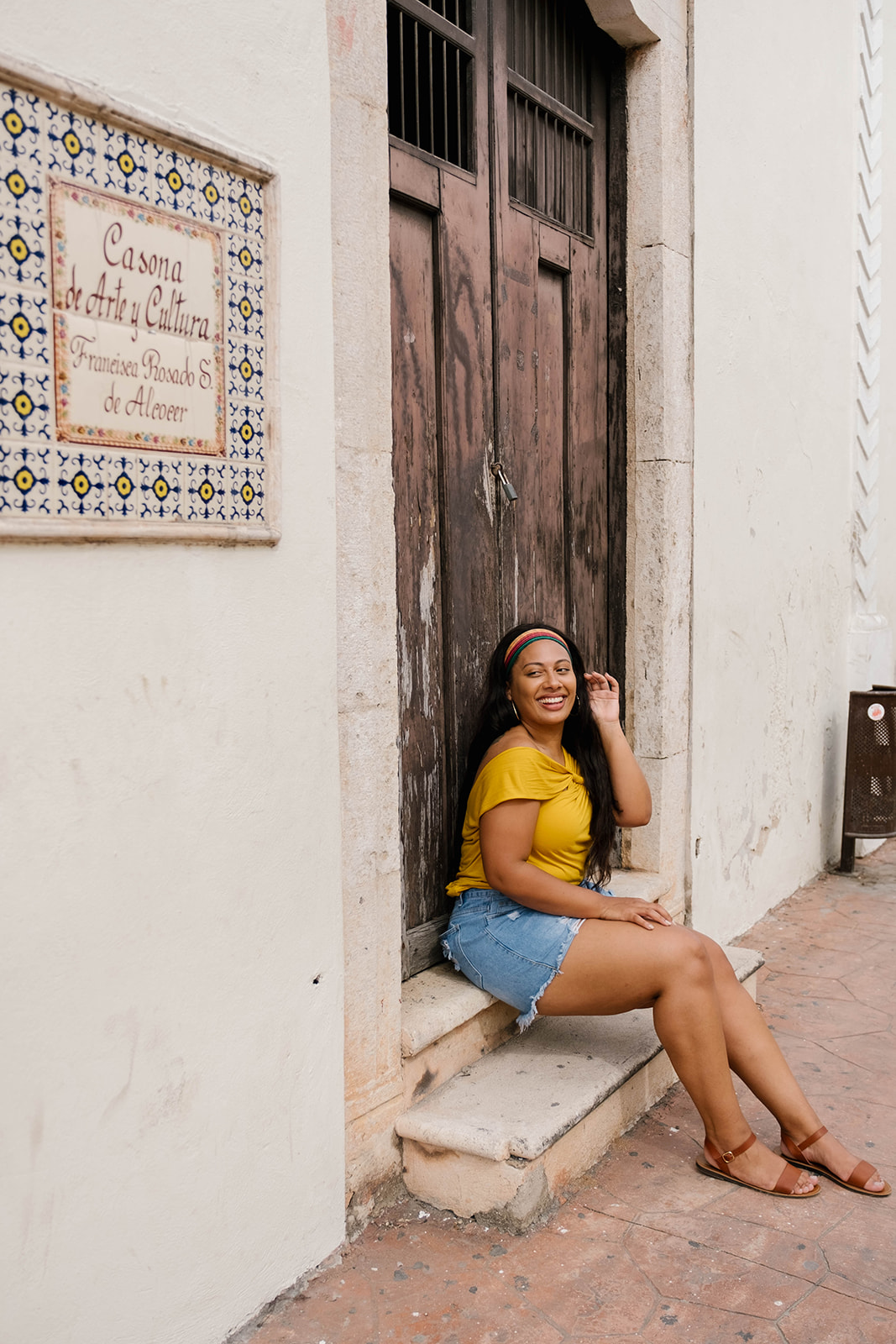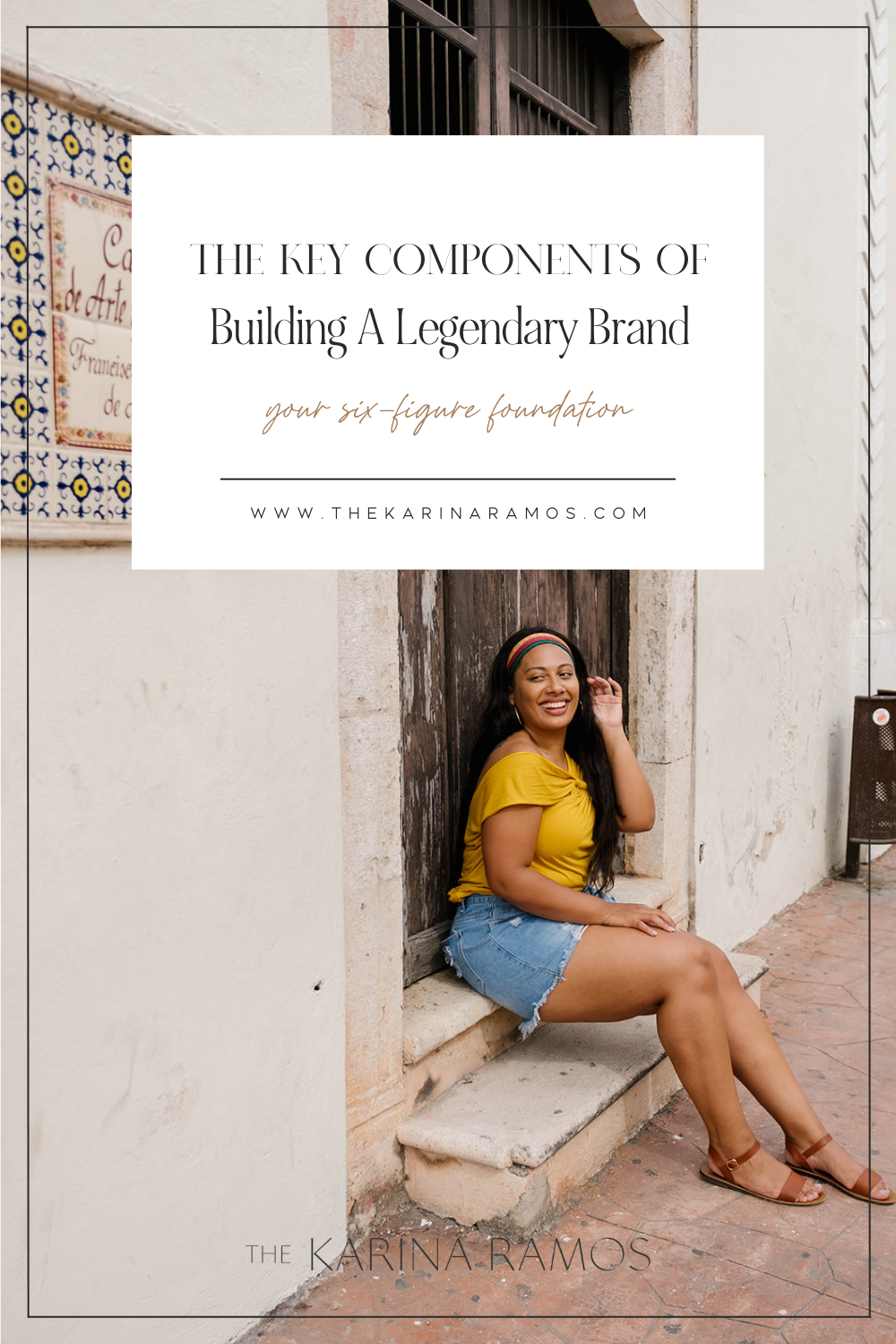close
01
Take the free masterclass
02
JOIN embody the MEMBERSHIP
03
ATTEND the NEXT LIVE EVENT
04
work with me 1:1
Get Started Guide
Hey! I'm Karina Ramos
Business coach, entrepreneur, and ultimate modern CEO - I am redefining the meaning of entrepreneurship.
Why do you think brands like Target, Nike, and Starbucks have such staying power? Why are their logos so recognizable? Is it their color schemes, fonts, or some enigmatic quality you can’t quite put your finger on?
Legendary brands like these don’t know something we don’t, but they don’t think small, either. Sure, their logos can be spotted from a mile down the freeway, but there’s more behind their branding strategies than just those superficial elements.
Read on to learn what branding really means, and how it has the power to build community, uplevel your business, and increase your sales like you wouldn’t believe.
Consistency is the Foundation
Here’s the question I get asked the most in my programs:
“What if I want to change my branding down the road? I feel like my mind changes so often!”
Girl, I feel that. Every creative does. We grow and evolve so much in this life and in our business– it’s only natural to want to switch things up every now and then.
Here’s the reality, though. It takes 6-8 times for a consumer to see your Instagram or Facebook post before they decide to click on it.
If you’re constantly changing your fonts and color scheme, you’re not giving your audience time to build that foundation of 6-8 interactions. They need to be able to recognize your brand, or else they’re starting at 1 every single time.
Branding is more than just your logo; it encompasses the entire visual representation of your brand. That means that, just like your logo, the rest of your visual representation has to stay consistent.
Consumers purchase from brands they trust, have used before, or that have been recommended to them. Think about it: when was the last time you dropped eighty bucks on a random eye cream that you just happened to pick off the shelf? When was the last time you bought a book based on the back cover blurb on a random browse, instead of an Amazon purchase from your Goodreads account? When a craving comes on, do you think to make a beeline straight for the Oreos, or take a risk on a random new brand?
Consistent branding = recognizable branding. And that’s the whole point, isn’t it?
How to Pull Off a Rebrand
We get tired of our branding sometimes– I know this better than anybody lately, as I just underwent a massive rebrand of my own. That’s okay. Here’s the rule of thumb.
Only allow yourself to rebrand or revamp every 8-10 months. Honestly, once every few years is what you are going for truly but until you get it JUST right, that is a good average. Try to think about the future of your brand during a rebrand, too. Where do you want to take your business in five years? Rebrand with that in mind. This is about creating a scalable business and a brand with some longevity. A consistent brand image is where it starts.
When rebranding, you should also be sure to take your audience on that voyage with you. I can’t stress this enough. Involve your clients in your rebrand so they’re aware of it, and can still recognize you after it is all said and done.
Ask them which color they like better: this mauve shade or this peachy shade? Ask them how they love to consume your content. Get personal with them about the reasons behind your rebrand.
I promise you that if you do it overnight, you’ll lose trust, credibility, and brand recognition with your audience. Do you want to have to start over building your audience every 8-10 months?
Didn’t think so!
Your Brand is More Than Just Your Color Scheme
I get so tired of seeing ads for branding templates that ONLY dive into your logo, color scheme, and fonts. These things are essential, of course, but branding is so much more than that.
Branding is how you communicate to your audience. It is how you make your audience feel. It’s the way you show up, including everything from the language you use, to your demeanor. It’s the way you present information to your audience. It’s the emotion and messaging of your brand, it’s your imagery; it’s everything. Your color scheme and fonts are the cherries on top.
This deep approach to branding is the only way to create a brand that leaves a legacy.
Think of it like this. When you describe a hot new brand to your friend, you’re not talking about the color scheme. You’re not talking about that brand’s fonts. Sure, your brain is registering those elements on a subconscious recognition level, but a brand is so much more than that.
You’re likely saying things like this:
“This blogger gets so real with her followers, I feel like she’s my bestie and we’ve never even met!”
“Their posts are always so inspiring; it seems like she always knows just what I need to hear.”
“Oh, she posts the best tips for taking care of your houseplants, and she’s really responsive if you have personal questions!”
These are branding elements at work.
That blogger getting real? That’s part of her brand’s messaging to stay authentic and show her audience what’s behind the curtain of the perfectly curated blogger’s Instagram.
Those inspirational posts from a small biz you follow? That’s an intentional move to associate an aura of positivity and uplift with their brand.
And that plant shop owner/#plantmom you love to follow? Her whole platform is helping followers like you treat their plants better. It’s how she builds trust with you, and it’s why she’s the first person you think of when you want to buy a new plant for your living room.
Aligning Your Brand’s Message with Your Imagery
It’s actually simple. A lot of brand consultants complicate it.
Let’s break it down step-by-step.
Step One: Your Ideal Client
First, you need to know your ideal client inside and out. This is the foundation of your business. You need to be clear on your ideal client or your brand and products won’t be consistent. How can you speak to her if you don’t know what she needs, what she’s looking for, what she likes, and what her pain points are?
If you’re struggling with your ideal client, get access to The Hub now – my free resource library for the modern ceo like you where you will get access to the Client Attraction Masterclass.
Step Two: Your Why
Okay, step two: break out your business journal and get really clear on your why. I mean it. Stop what you are doing and whip out your journal!
Start with,
Why did you start your business?
Why are you even doing all this?
What is your biggest motivation?
How do I want my business to make me feel?
What do you want to be known for; what legacy do you want to leave?
Who do you want to help and why?
All of these questions should include your brand’s purpose, messaging, and the way you communicate with your audience. Your brand is the way you speak. It’s what you do, what you stand for.
Armed with a clear vision of your why and your ideal client nailed down, you can move on to step three: creating a mood board.
Step Three: Your Mood Board
I like to use Pinterest for my mood boards because it’s easy and intuitive. Making associations from existing imagery is so much harder than coming up with imagery ideas from scratch to associate with your brand.
Here’s my advice: create a Pinterest board just for your brand and get pinning. Pin everything that feels good, everything that inspires you relating to your brand, everything that pulls up emotion for you. Don’t worry about pinning all the same mood, colors, or fonts. Just be free and let your mind associate.
You’ll be surprised by how many common threads you’ll be able to find on your Pinterest board after this exercise. You’ll notice how you love imagery with pops of deep blue, or imagery that portrays raw emotion. Maybe you’ll notice that you love illustrative imagery or super minimal design.
These are the crumbs you follow to find your brand’s imagery. Pull out the colors and feelings that tie together on your board to create your final mood board.
Once you have that put together, head to the The Hub to download your free Mood Board template and watch the quick training I put together for you to finalize your brand guidelines.
It’s that simple. 🙂
Creating Your Legendary Brand
You’re now officially armed with the knowledge of the key components of a legendary brand. These are some of the principles I teach in my programs.
I’ve got other resources for you, too: my legacy branding blueprint workbook will help you get clear on your why, and don’t forget to do the client attraction masterclass all in the branding section of The Hub!
Drop a comment below if you have any questions. I can’t wait to see your logo and brand all over social media and media publications as it should be, right next to the other legendary brands!
Are you ready to generate your first six-figures in business? Click here now to get access to – The Hub – a resource library for the modern CEO that’s brimming with tools, videos, templates and resources which are all designed to help you up-level your mindset and create a plan of action to execute your goals and get where you want to be in your business.
modern ceo
resources for you to step into your role as a
the blog
welcome to the edit
The Edit is a blog curated by entrepreneur Karina Ramos to give you the tools you need to lay the foundation of your seven-figure+ business. She gives you a transparent look behind the scenes of being a modern CEO.

